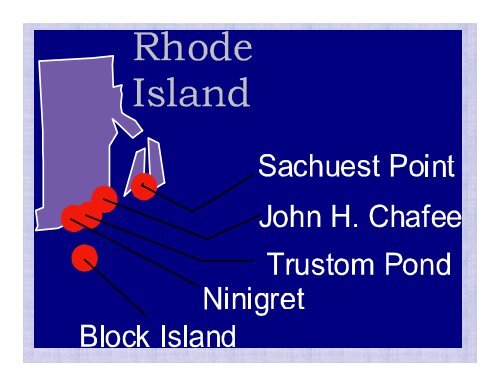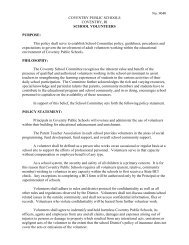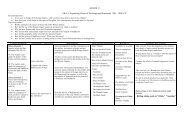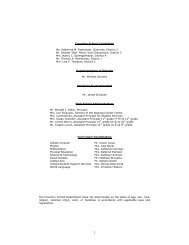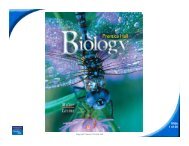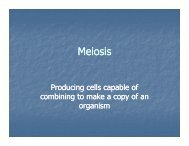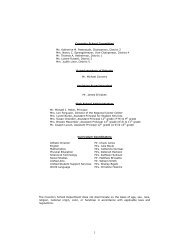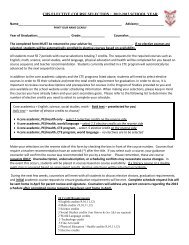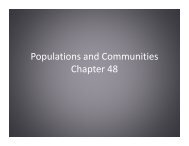Landfill restoration
Landfill restoration
Landfill restoration
Create successful ePaper yourself
Turn your PDF publications into a flip-book with our unique Google optimized e-Paper software.
Sachuest Point<br />
National Wildlife Refuge<br />
<strong>Landfill</strong> Remediation<br />
and<br />
Habitat Restoration<br />
Suzanne Paton, USFWS
Priority species and habitat needs<br />
• Saltmarsh Sharp-tailed Sparrow – high<br />
and low marsh for nesting and foraging
Priority species and habitat needs<br />
• Saltmarsh Sharp-tailed Sparrow – high<br />
and low marsh for nesting and foraging<br />
• American Black Duck – shallow water for<br />
dabbling, resting
Priority species and habitat needs<br />
• Saltmarsh Sharp-tailed Sparrow – high<br />
and low marsh for nesting and foraging<br />
• American Black Duck – shallow water for<br />
dabbling, resting<br />
• Migratory Shorebirds – mudflats and<br />
varying depths of shallow water
Priority species and habitat needs<br />
• Saltmarsh Sharp-tailed Sparrow – high<br />
and low marsh for nesting and foraging<br />
• American Black Duck – shallow water for<br />
dabbling, resting<br />
• Migratory Shorebirds – mudflats and<br />
varying depths of shallow water<br />
• Wading birds – channels and pools that<br />
support fish
Photo: Great Meadow Farm
Photo: Great Meadows Farm
Bird surveys conducted:<br />
• December 2004 – present<br />
• Total of 268 surveys<br />
• Primarily April through November<br />
• Fifty-five five species of waterbirds detected<br />
• Seven birds of prey
180<br />
160<br />
140<br />
120<br />
100<br />
80<br />
60<br />
40<br />
20<br />
0<br />
168<br />
Species detected most frequently (268 surveys)<br />
147<br />
138<br />
133 133<br />
111<br />
102<br />
70 69 68 67<br />
54 54 50<br />
Am. Black duck<br />
Ring billed gull<br />
Great black-backed gull<br />
Black-bellied plover<br />
Semipalmated plover<br />
semipalmated sandpiper<br />
Greater yellowlegs<br />
Double crested cormorant<br />
Least sandpiper<br />
Laughing gull<br />
Killdeer<br />
Piping plover<br />
Mallard<br />
Herring Gull
200<br />
180<br />
160<br />
140<br />
120<br />
100<br />
80<br />
60<br />
40<br />
20<br />
0<br />
200<br />
130<br />
75<br />
66 63<br />
30<br />
17 16 13 8 7 6 6 5 5<br />
Dunlin<br />
Piping Plover<br />
Lesser Yellowlegs<br />
Spotted Sandpiper<br />
White Rumped Sandpiper<br />
Willet<br />
Greater Yellowlegs<br />
Black-bellied Plover<br />
Killdeer<br />
Ruddy Turnstone<br />
Semipalmated Sandpiper<br />
Least Sandpiper<br />
Short Billed Dowitcher<br />
Sanderling<br />
Semipalmated Plover<br />
Max # of individuals
Common shorebirds detected 2005-2007<br />
Max # of individuals<br />
200<br />
180<br />
160<br />
140<br />
120<br />
100<br />
80<br />
60<br />
40<br />
Sanderling<br />
Semipalmated Plover<br />
Semipalmated Sandpiper<br />
Short Billed Dowitcher<br />
Least Sandpiper<br />
Ruddy Turnstone<br />
20<br />
0<br />
Mar April May June July Aug Sept Oct Nov
Max # of individuals<br />
18<br />
16<br />
14<br />
12<br />
10<br />
8<br />
6<br />
4<br />
Shorebirds detected 2005-2007<br />
Black-bellied Plover<br />
Dunlin<br />
Greater Yellowlegs<br />
Killdeer<br />
Lesser Yellowlegs<br />
Piping Plover<br />
Spotted Sandpiper<br />
White Rumped Sandpiper<br />
Willet<br />
2<br />
0<br />
Mar April May June July Aug Sept Oct Nov
Additional Shorebirds detected<br />
(few and infrequent)<br />
• American Avocet<br />
• American Oystercatcher<br />
• Baird’s s Sandpiper<br />
• Hudsonian Godwit<br />
• Marbled Godwit<br />
• Pectoral Sandpiper<br />
• Red Phalarope<br />
• Stilt Sandpiper<br />
• Western Sandpiper
Gulls species detected 2004-2007<br />
Max # of individuals<br />
1200<br />
1000<br />
800<br />
600<br />
400<br />
200<br />
Bonapartes Gull<br />
Great Black-backed Gull<br />
Herring Gull<br />
Laughing Gull<br />
Little Gull<br />
Ring-billed Gull<br />
0<br />
March<br />
April<br />
May<br />
June<br />
July<br />
Aug<br />
Sept<br />
Oct<br />
Nov<br />
Dec
1000<br />
Tern species detected 2005-2007<br />
Black Tern<br />
360<br />
Caspian Tern<br />
Common Tern<br />
M ax # o f in dividuals<br />
100<br />
10<br />
13<br />
2<br />
3<br />
15<br />
Forsters Tern<br />
Least Tern<br />
Royal Tern<br />
1<br />
May June July Aug Sept
9<br />
8<br />
7<br />
6<br />
5<br />
4<br />
3<br />
2<br />
1<br />
0<br />
Wading birds detected 2005-2007<br />
Glossy Ibis<br />
Great Blue Heron<br />
Great Egret<br />
Green Heron<br />
Snowy Egret<br />
May<br />
June<br />
July<br />
August<br />
Sept<br />
Oct<br />
Nov<br />
Dec<br />
April<br />
Max # of individuals
Max # of individuals<br />
70<br />
60<br />
50<br />
40<br />
30<br />
20<br />
10<br />
Dabbling ducks - 2006-2007<br />
American Black Duck<br />
Blue-winged Teal<br />
Green-winged Teal<br />
Mallard<br />
Northern Shoveler<br />
0<br />
March<br />
April<br />
May<br />
June<br />
July<br />
Aug<br />
Sept<br />
Oct<br />
Nov<br />
Dec
MANY, MANY Thanks to:<br />
Rey Larsen and Bruce Larson for<br />
being so very dedicated to<br />
documenting the bird life of<br />
Sachuest Point (and beyond)!<br />
NRCS, CRMC, RIDEM …


